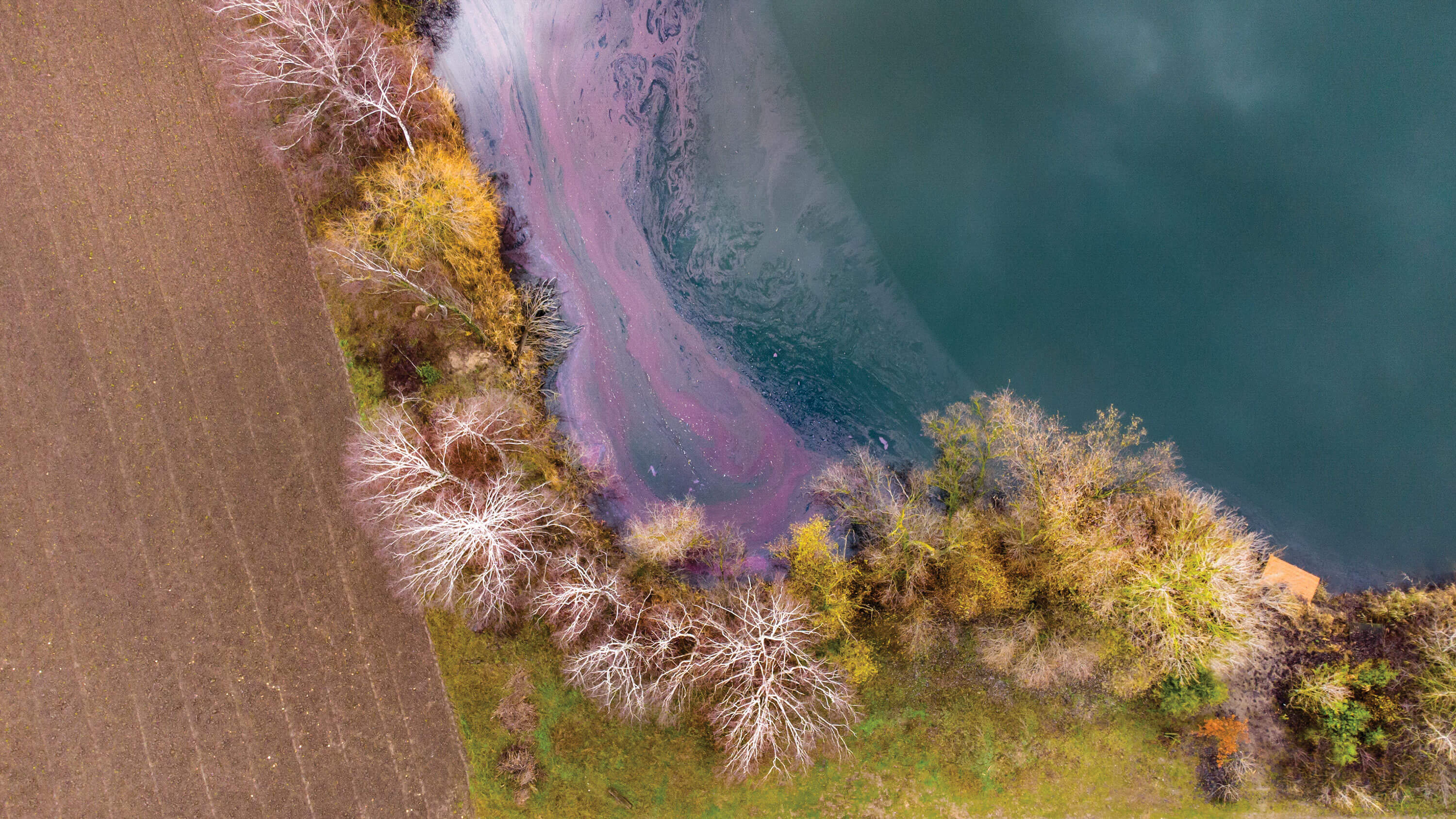
What’s the Danger of Algal Blooms?
Our resident expert, Jason Adolf, explains.
Algal blooms are a normal part of the life cycle in water bodies. But when algae grow out of control, resulting harmful algal blooms (HABs) can prove toxic to the local ecology and impact everything from property values to human health. Jason Adolf, Ph.D., an endowed associate professor of marine science and HAB expert, explains.
1. Algae form the food and energy base for all organisms in aquatic ecosystems, so when a bloom occurs, toxins can be carried up the food chain. That can lead to massive fish-kills and marine life die-offs. Some toxins can even be passed to humans who eat affected fish.
2. HABs can wreak havoc on the economy. Take, for example, Lake Hopatcong—New Jersey’s largest lake and a popular tourist destination. A 2019 algal bloom forced the state to issue an advisory leading to the closure of swimming areas at the height of the summer season, resulting in a 30% to 40% drop in business for restaurants and marinas in neighboring Roxbury Township.
3. HABs can negatively impact home values. A 2020 study published in The Journal of Real Estate Finance and Economics showed that homes within 1 mile of the coast of southwestern Florida sold for up to 30% less in the months when there was a “red tide” algal bloom, compared with similar homes sold in unaffected counties.
4. HABs can be dangerous to pets. A type of toxic algae found in lake systems creates a potent liver toxin that can lead to liver failure in dogs when ingested, as they tend to drink water as they swim.
How You Can Help
Human-caused factors can impact the severity and duration of HABs.
Adolf says everyone can do their part to help by working to reduce their individual carbon footprint, reducing nutrient pollution by refraining from dumping leaves or grass clippings into water systems, and by getting involved at the local level either by joining a citizen science group or supporting local commissions focused on restoring and supporting the health of coastal oceans and lake watersheds.